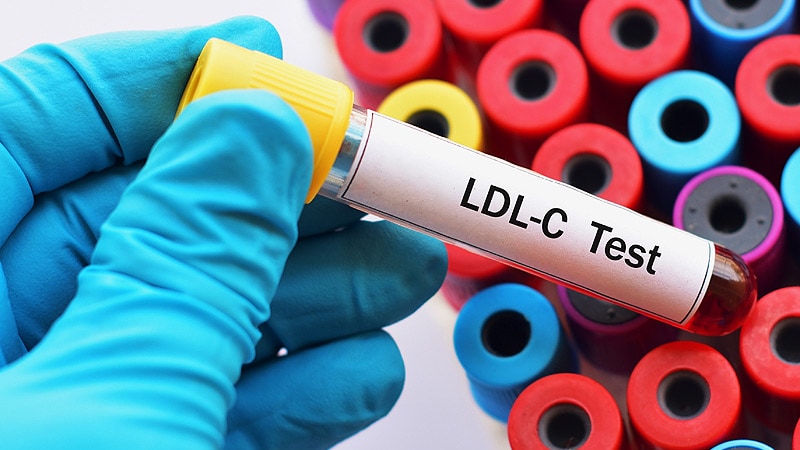Novel PCSK9 Inhibitor Lerodalcibep Demonstrated Significant LDL Cholesterol Reduction of Over 50% in High-Risk Cardiovascular Patients
Core Concepts
Lerodalcibep, a novel PCSK9 inhibitor, reduced LDL cholesterol by over 50% in patients with or at high risk for cardiovascular disease, providing a more convenient and effective treatment option compared to existing therapies.
Abstract
The content discusses the results of the LIBerate-HR trial, which evaluated the efficacy and safety of a novel PCSK9 inhibitor called lerodalcibep in patients with cardiovascular disease (CVD) or at high risk for myocardial infarction or stroke.
Key highlights:
Lerodalcibep reduced LDL cholesterol by over 50% at week 52 and by 62.69% on average at weeks 50 and 52, compared to placebo.
The treatment allowed 90% of high-risk patients to achieve the more stringent LDL cholesterol targets recommended by guidelines, compared to only 16% in the placebo group.
Lerodalcibep was well-tolerated, with similar rates of adverse events and serious adverse events compared to placebo.
The once-monthly subcutaneous injection of lerodalcibep provides a more convenient option compared to the every 2-week injections of monoclonal antibody PCSK9 inhibitors.
The study authors noted that the significant LDL cholesterol reduction with lerodalcibep could potentially translate to a 30-35% reduction in major adverse cardiovascular events.
The trial enrolled a diverse patient population, including a high proportion of women and underrepresented minorities, which is a positive aspect.
A larger and longer trial is planned to further evaluate the cardiovascular outcomes benefits of lerodalcibep.
Novel PCSK9 Inhibitor Reduced LDL by 50%
Stats
Lerodalcibep reduced LDL cholesterol by 56.19% at week 52 and 62.69% on average at weeks 50 and 52, compared to placebo.
The absolute decreases in LDL cholesterol were 60.6 mg/dL at week 52 and 74.5 mg/dL on average at weeks 50 and 52.
90% of high-risk patients on lerodalcibep achieved the more stringent LDL cholesterol targets, compared to only 16% in the placebo group.
Lerodalcibep reduced non-HDL cholesterol by 47%, apolipoprotein B by 43%, and Lp(a) by 33%.
Quotes
"This hopefully gives doctors a more practical PCSK9 antagonist that's small volume, can be administered monthly, and is an alternative to the every 2 week injection of monoclonal antibodies and probably more effective in LDL cholesterol–lowering compared to the small interfering RNA medicines."
"There's a sort of rule of thumb that for every 40 mg/dL that LDL-C is reduced, you reduce major adverse cardiovascular events (MACE) by 20%-23%. So, by reducing LDL-C by 60 mg/dL at week 52, you're reducing your risk of MACE maybe by 30% or 35%."
Key Insights Distilled From
by Pauline Ande... at www.medscape.com 04-18-2024
https://www.medscape.com/viewarticle/novel-pcsk9-inhibitor-reduced-ldl-50-2024a10007hi
Deeper Inquiries
What are the potential long-term cardiovascular outcomes benefits of the significant LDL cholesterol reduction observed with lerodalcibep?
The significant LDL cholesterol reduction observed with lerodalcibep, a novel PCSK9 inhibitor, can potentially lead to improved long-term cardiovascular outcomes. Lowering LDL-C levels by more than 50% can result in a reduced risk of major adverse cardiovascular events (MACE) by approximately 30% to 35%. This reduction in LDL-C is associated with a decrease in the progression of atherosclerosis, which is a key factor in the development of cardiovascular diseases such as heart attacks and strokes. By achieving and maintaining lower LDL-C levels, patients may experience a decreased incidence of cardiovascular events and improved overall cardiovascular health in the long term.
How does the efficacy and safety profile of lerodalcibep compare to other emerging PCSK9 inhibitor therapies in development?
The efficacy and safety profile of lerodalcibep, as demonstrated in the LIBerate-HR trial, appears promising compared to other emerging PCSK9 inhibitor therapies in development. Lerodalcibep showed a substantial reduction in LDL-C levels by more than 50% after 1 year of treatment, with most patients achieving the recommended LDL targets. Additionally, lerodalcibep was well-tolerated, with a similar incidence of adverse events compared to placebo. This suggests that lerodalcibep may offer a more practical and convenient treatment option for patients requiring LDL-C reduction, especially when compared to existing therapies that require more frequent injections or have different mechanisms of action. Further comparative studies with other PCSK9 inhibitors will be necessary to fully assess the efficacy and safety differences between these therapies.
What are the potential barriers to widespread adoption of lerodalcibep, and how can they be addressed to improve access and utilization for high-risk cardiovascular patients?
Despite the promising results of lerodalcibep in reducing LDL-C levels and its favorable safety profile, there may be potential barriers to its widespread adoption. One barrier could be the cost of the medication, as newer therapies like PCSK9 inhibitors tend to be expensive, limiting access for some patients. To address this, strategies such as negotiating lower prices, increasing insurance coverage, or providing patient assistance programs could help improve access to lerodalcibep for high-risk cardiovascular patients.
Another barrier could be the need for healthcare providers to become familiar with the new therapy and its administration. Education and training programs for healthcare professionals on the use of lerodalcibep could help increase awareness and confidence in prescribing the medication. Additionally, ensuring that lerodalcibep is included in treatment guidelines and recommendations by cardiovascular societies can further support its adoption and utilization in clinical practice.
Furthermore, patient awareness and adherence to the treatment regimen are crucial for the success of lerodalcibep. Patient education on the importance of LDL-C reduction, the benefits of lerodalcibep, and proper administration techniques can help improve adherence rates. Implementing support programs, reminders, and follow-up protocols can also enhance patient engagement and persistence with lerodalcibep therapy, ultimately leading to better outcomes for high-risk cardiovascular patients.
0
